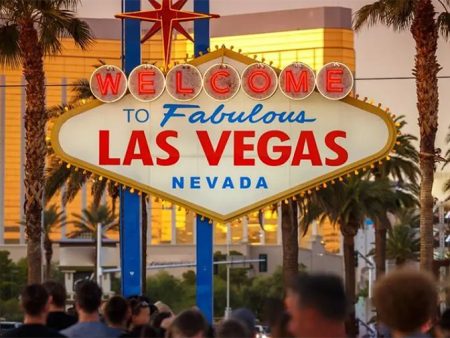During Wednesday’s earnings call with Wall Street analysts, Bally’s Corporation executives indicated no intentions for the site of the Tropicana Las Vegas beyond this autumn. “We expect to demolish the Tropicana in October,” said CEO Robeson Reaves, adding that the company was “assessing” alternate uses of the land.
Later, corporate Treasurer Charles Diao said, “We have absolutely no urgency whatsoever, as our option increases in value” the longer Bally’s waits. He added that the company had “minimal” capital requirements for the site, nine acres of which are slated for an Oakland Athletics baseball stadium.
Reaves also found a silver lining in the latest delay in New York City casino selection. The postponement until 2026 “reduces our immediate financial needs.”
No mention was made during the call of recent Gaming & Leisure Properties speculation on whether or not to buy Bally’s. Executives also allowed for no discussion of the recent Standard General buyout offer, saying it was still under consideration by a special committee.
Turning to Chicago, President George Papanier said a full quarter of operations at the temporary Bally’s Casino in Medinah Temple “helped offset the winding down of the Tropicana,” which closed April 2. The temporary did $13 million in business in March, up 50 percent from December.
Papanier said the temporary casino was adding VIP options (such as a high-limit slot room) and more partnerships with local restaurants. At present, its primary catchment area is a five-mile radius surrounding the downtown casino.
Asked how much the Windy City casino had ramped, CFO Marcus Glover replied, “I don’t know that there’s a science behind how much ramp is enough.” He added that Bally’s will focus on profitability later.
“Right now, profitability is pretty light, but that’s intentional.” Glover further explained that aggressive marketing of the Bally’s brand, new to the area, was the priority.
Interjected Papanier, “We’re already at the metric we intend to be” in table-game performance.
With 80,000 people in the Chicago database, the customer profile was described by Papanier as “skewing younger than you would typically have in a regional environment. It’s primarily driven by table games. We remain confident that the [permanent] property will be ready by December 2026.” Financing issues for $1 billion-plus Bally’s Chicago were not discussed.
Overall, casino revenues for February and March “mitigated” an adverse January, said Glover. “We expect margins to return to more-normalized levels, as our core portfolio remains strong. We remain very excited by the road map,” including the launch of online sports betting (OSB) in the United Kingdom.
One headwind faced by the company is in Rhode Island, where bridge construction near Providence has impeded casino traffic, particularly at peak-travel periods. Papanier said Bally’s two Ocean State casinos were seeing “definite impact” from the bridge work, “but not material” at this time.
In the interactive sphere, gains were made in Pennsylvania and New Jersey, along with an initial $1.2 million boost from Rhode Island, where Bally’s enjoys an igaming monopoly. So far, the digital segment is projected to generate a $30 million negative return on investment this year.
Glover sounded a variation on a frequent Bally’s theme: Online sports betting is now “a means to our igaming outcome … and we’re seeing some great progress in Rhode Island.” Still, he added, the company will be “very measured” in OSB reinvestment.
An interactive bright spot was the UK, where Reaves said Bally’s is “actively exploring” ways to expand its online presence. He called business there “very consistent. We’ve got very solid customer attention.”
As for the long-awaited White Paper on gambling in the UK, Reaves opined that the Gambling Commission was “doing a great job” of consulting with operators. “I’m very happy with where the UK is. We see a lot more to unlock there.”
Bally’s reported $169 million cash on hand and $3.6 billion in debt.









